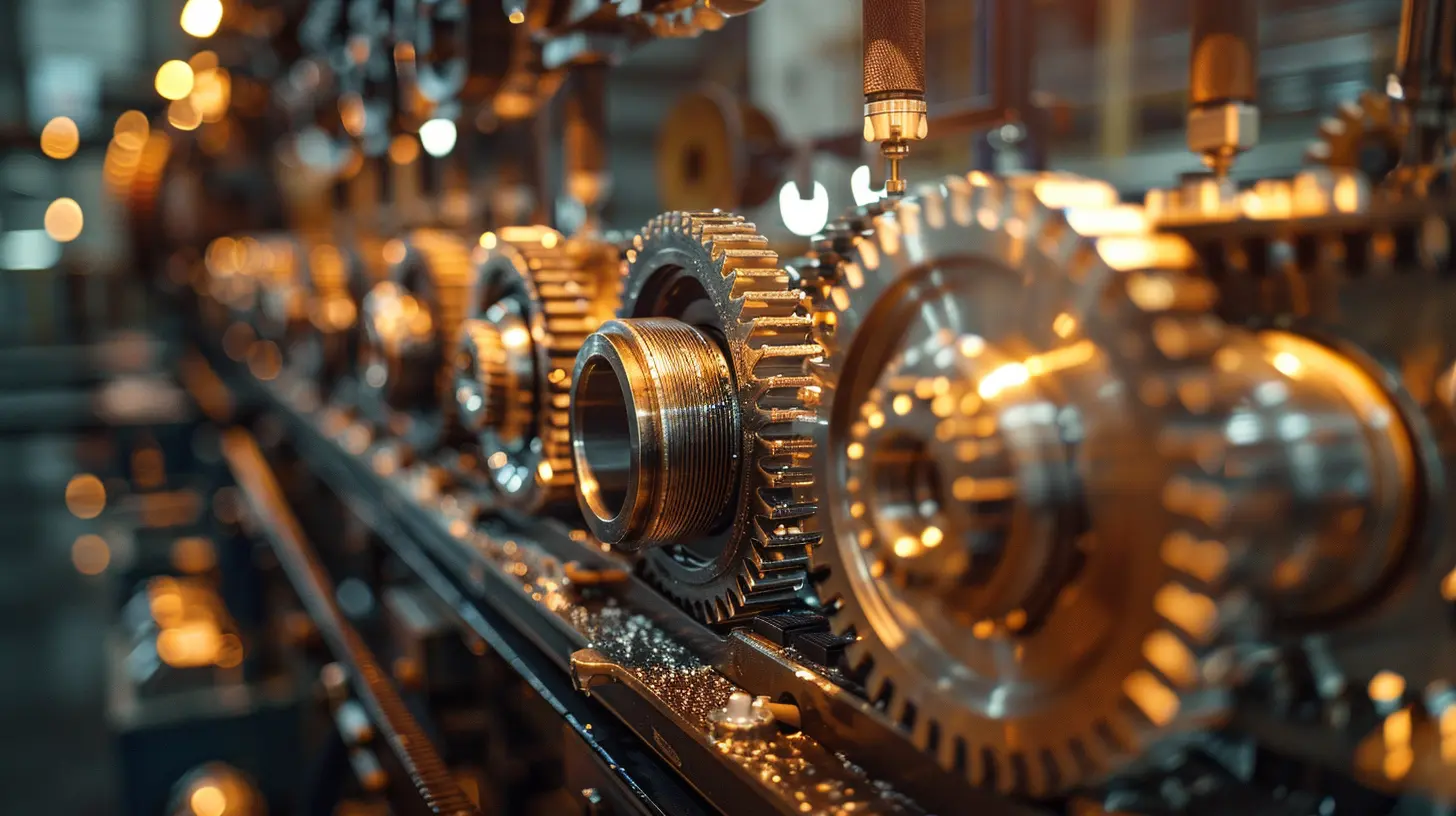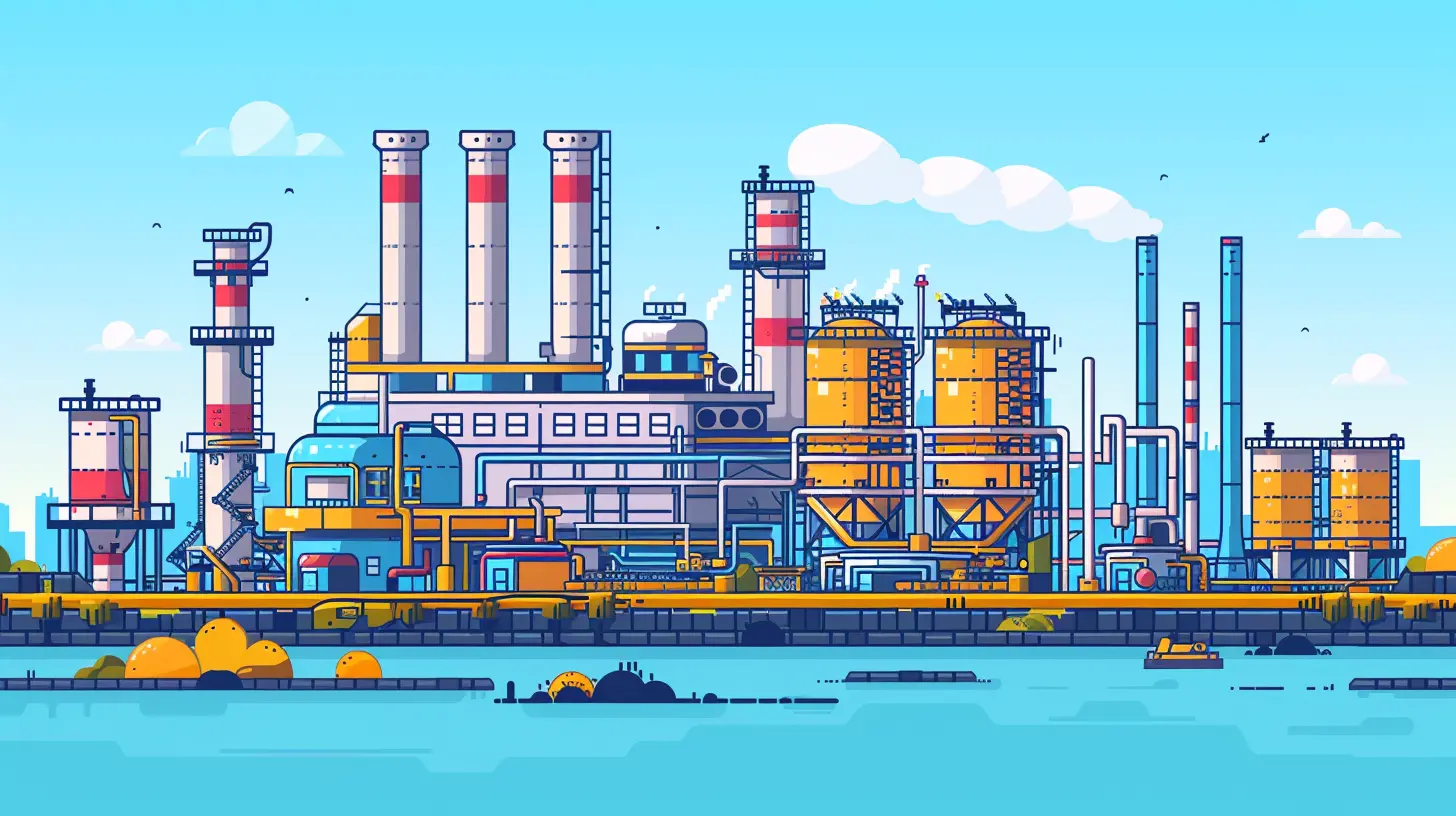How Machine Learning is Improving Predictive Maintenance in Industries
18 September 2025
Imagine if your car could whisper, “Hey buddy, my brake pads are about to give out in 300 miles, schedule an appointment now.” Pretty nifty, right? Now, scale that idea up to factories, oil rigs, wind turbines, and aircraft engines. That’s not science fiction anymore — it’s predictive maintenance powered by Machine Learning (ML).
Yep, that buzzword you keep hearing about at tech meetups and (probably) ignoring in your LinkedIn newsletter is actually doing some pretty cool stuff. It's not all robots taking jobs — sometimes it's robots saving time, money, and keeping things from blowing up. Literally.
So buckle up! We’re diving into the world of ML and predictive maintenance, where machines not only work hard but also know when they’re about to break a sweat... or a gear.
What Is Predictive Maintenance (And Why Should I Care)?
Before we dive into the ML magic, let’s get on the same page about predictive maintenance.Predictive maintenance (PdM) is like having a sixth sense for your machines. Instead of waiting for something to break and then fixing it (reactive maintenance), or fixing something according to a schedule regardless of its condition (preventive maintenance), PdM says: “Hold up, let me check how you’re actually doing before we take any action.”
It uses data — lots of it — from sensors, historical records, and other inputs to predict when equipment will fail. When done right, it reduces downtime, saves loads of cash, and keeps operations running smoother than a fresh jar of peanut butter.
But — and it’s a big but — traditional predictive maintenance has its limits. Enter Machine Learning.
Why Is Machine Learning a Game-Changer for Predictive Maintenance?
Picture this: You’ve got a giant manufacturing plant, and each machine is spewing out oceans of data every second — temperature, vibration, sound, pressure, you name it. Trying to figure out what all that means manually? Good luck!That’s where Machine Learning struts in like the Sherlock Holmes of maintenance. It analyzes all that complex, noisy data, finds patterns, and says, “Elementary, my dear Watson — this motor is going to fail in 6 days.”
So, what’s ML bringing to the PdM party?
1. It Learns From the Past (And Keeps Getting Better)
Machine Learning models improve over time. Feed them more data, and they become smarter, just like a doctor who’s seen thousands of patients.Got past data on equipment failures? ML can spot the subtle signals that preceded a breakdown. Think of it as teaching machines to recognize the early symptoms of a cold before the sneezing starts.
2. It Digs Into Real-Time Data
While traditional approaches might schedule maintenance based on “oh, it’s been six months,” ML watches the real-time data stream like a hawk. It catches anomalies and patterns that indicate something’s off. The result? Just-in-time maintenance.3. It Handles Complexity Like a Pro
Some machines are more complicated than your grandma’s lasagna recipe. Multiple parts, various operating conditions, weird noises — you get the picture. ML thrives in complexity. It juggles multiple variables with ease and spots correlations that human analysts might miss.
Real-Life Examples: ML-Powered Predictive Maintenance in the Wild
Alright, enough theory. Let’s talk about how industries are actually using ML in PdM.✈️ Aerospace: Keeping Planes in the Sky
Airlines use ML to monitor engines, hydraulic systems, and more. By analyzing vibration and temperature data, algorithms can flag issues before they become critical. The result? Fewer delays, lower maintenance costs, and happier passengers (well, until Wi-Fi goes down).🏭 Manufacturing: Saving Millions of Dollars
Factories love uptime like a cat loves cardboard boxes. Predictive maintenance using ML helps monitor those huge CNC machines, motors, or conveyer belts. When ML flags something fishy, maintenance teams zap the issue before it becomes a line-stopping disaster.⚡ Energy Sector: Powering Up Reliability
In wind turbines and power grids, maintenance is expensive and not exactly “right around the corner.” With ML, energy companies can optimize inspection schedules and fix only what's needed, when it's needed. Less waste, fewer outages, and a planet that thanks you.🚗 Automotive: Your Car Knows Best
Modern cars are basically computers on wheels. ML-powered systems can now alert drivers and fleet managers about potential part failures before they even feel a thing. It's like your car turning into a mechanic with a PhD.
The Tech Behind the Magic: How Does It Work?
So how does ML know when your factory’s megamachine is about to bite the dust? Well, it’s not magic — it’s data science. Here's a peek under the hood.Data Collection — The More, The Merrier
Sensors are the eyes and ears of your machinery. They collect data like:- Temperature
- Vibration
- Pressure
- RPM
- Voltage
This data gets logged and sent to a central system — often in real-time — creating a historical and live feed of what’s happening.
Feature Engineering — Fancy Term, Big Impact
Not all data is useful as-is. ML engineers transform raw sensor data into meaningful “features,” like “average temp over the last hour” or “vibration change rate.” This is like turning raw ingredients into a gourmet dish ML can actually digest.Training Models — Teaching the Robot Brain
Once features are ready, ML algorithms (like Random Forest, Gradient Boosting, or Neural Networks) are trained on past failure events. These models learn what conditions led to past issues and apply that knowledge to future predictions.Anomaly Detection — Something Smells Fishy
Even if there isn’t enough failure history (which is actually good), ML can still watch for anomalies. When the behavior of a machine suddenly goes off the rails, the system raises a red flag.Benefits That’ll Make Your CFO Smile
Machine Learning in predictive maintenance isn’t just cool tech — it’s a strategic move with major perks.💰 Reduced Downtime
Unplanned downtime can cost industries millions per hour (yep, read that again). Predictive maintenance slashes those surprise stoppages to a minimum.🧰 Lower Maintenance Costs
Why replace a part that's doing just fine? ML helps optimize part usage and reduces unnecessary maintenance.🔧 Better Asset Lifespan
By catching small issues early, components don’t wear out prematurely. In other words, your machines age like fine wine instead of fast food.🌍 Sustainability
Less waste from unnecessary part replacements or emergency repairs means a greener operation. Because saving the planet never goes out of style.Challenges? Of Course. But Not Deal-Breakers
Hey, no technology’s perfect. ML-powered PdM does have its hurdles.📉 Dirty or Incomplete Data
Garbage in, garbage out. Poor-quality data can make even the best ML models cough and sputter.🧠 Lack of Domain Knowledge
ML folks need to work hand-in-hand with engineers who understand the equipment. Otherwise, you’re just guessing — but with fancier math.🤔 Resistance to Change
Some folks still prefer looking at clipboards and listening for weird noises. Adopting ML means shifting mindsets, not just technology.How to Get Started (Without Losing Your Mind)
Thinking about dipping your toes into ML-powered maintenance? Here’s a roadmap anyone can follow:1. Start Small
Pick one piece of equipment with good historical data and a high downtime cost. Baby steps, people.2. Use the Right Tools
You don’t have to reinvent the wheel. There are loads of platforms like AWS, Azure ML, or Google’s AI tools that can help you build models without needing a PhD.3. Involve the Right People
Bring maintenance teams, data scientists, and IT folks to the same table. Everyone’s got a piece of the puzzle.4. Iterate and Improve
Your first model won’t be perfect — and that’s okay. ML thrives on iteration. Learn, tweak, repeat.Looking Ahead: Where Are We Going with All This?
With the rise of IoT, 5G, and edge computing, predictive maintenance is getting smarter — and faster.Imagine AI models running locally on sensors, making predictions in milliseconds. Or digital twins — virtual replicas of physical machines — that simulate breakdown scenarios before anything actually happens.
Yup, the future’s looking slick. Industries that ride the ML wave now will be miles ahead in productivity, cost savings, and resilience.
Final Thoughts: Trust the Machines (Sometimes)
We’re not saying robots are taking over, but letting them take over your maintenance schedule? That’s just smart business.Machine Learning turns your machinery from passive workers into active participants in their own well-being. They’re not just chugging along until something explodes — they’re helping you prevent the explosion in the first place.
So whether you’re in manufacturing, logistics, aerospace, or running a lemonade factory (hey, maybe you’ve got automated lemon squeezers), there’s an ML solution waiting to make your life easier.
And hey, maybe one day your coffee machine will warn you before it dies a dramatic, caffeine-less death. A guy can dream.
all images in this post were generated using AI tools
Category:
Machine LearningAuthor:

Ugo Coleman
Discussion
rate this article
1 comments
Kiera Cook
In the cradle of innovation, machine learning weaves its thread, Predictive maintenance blooms, where once uncertainty tread. With insights profound, industries embrace the dawn, Transforming echoes of wear into futures reborn. A harmonious dance of data and time, Nature of machines, now in rhythm and rhyme.
September 20, 2025 at 6:32 PM

Ugo Coleman
Thank you for your poetic insight! You've beautifully captured the transformative power of machine learning in predictive maintenance.


